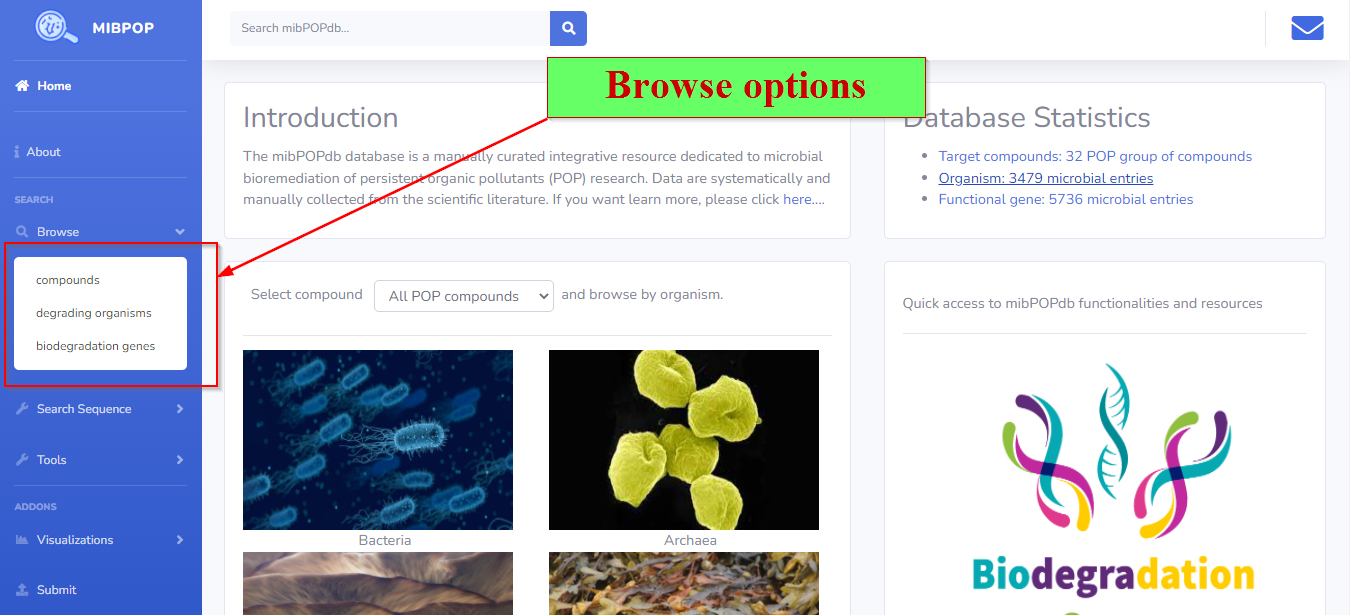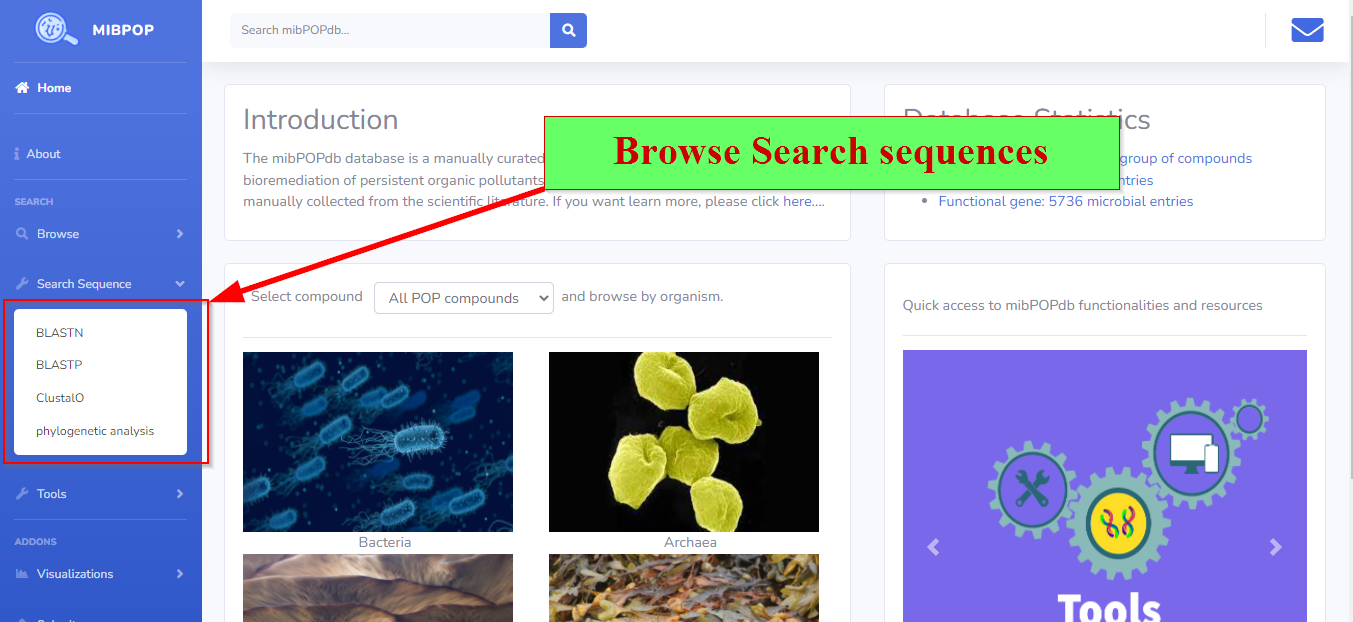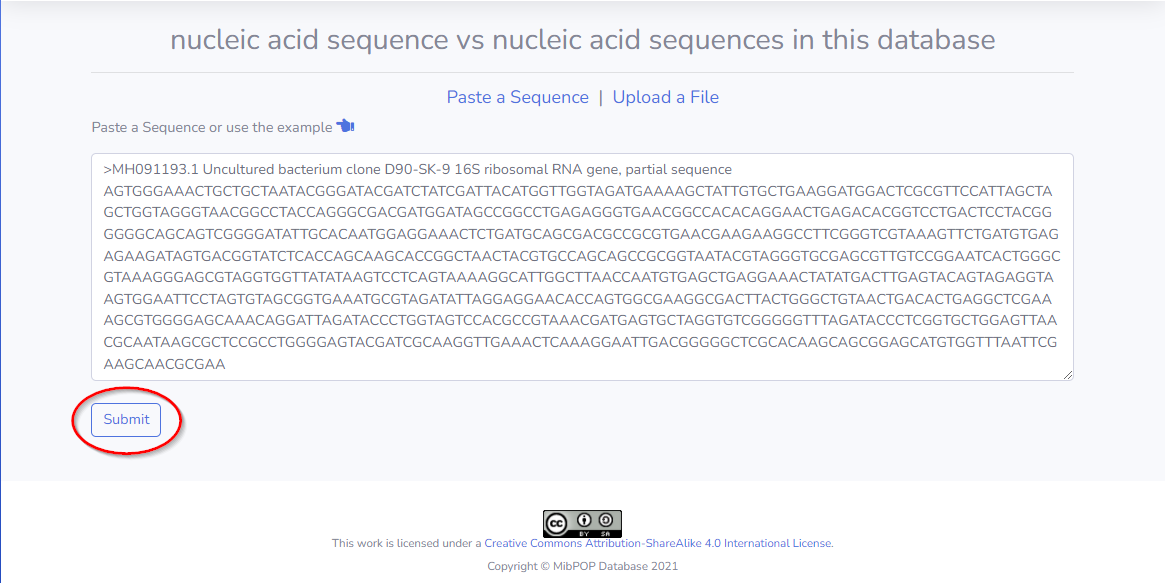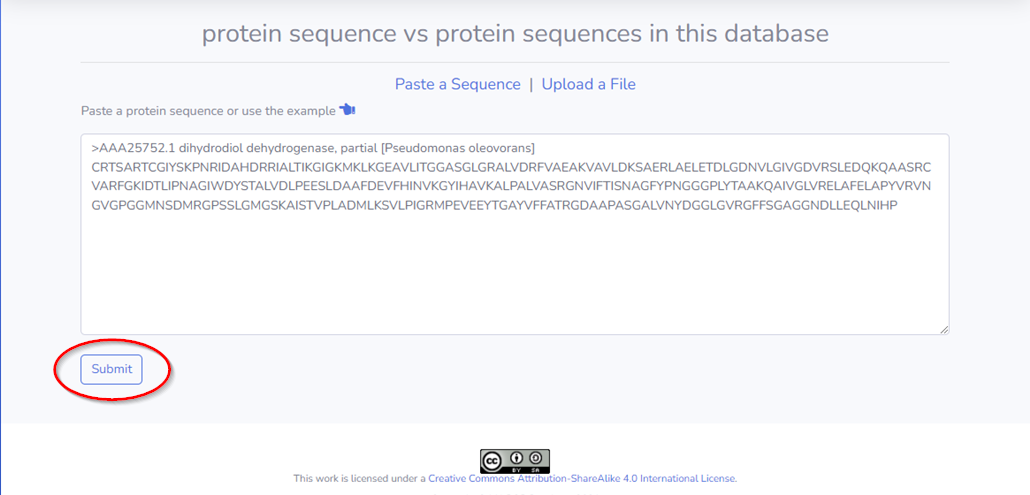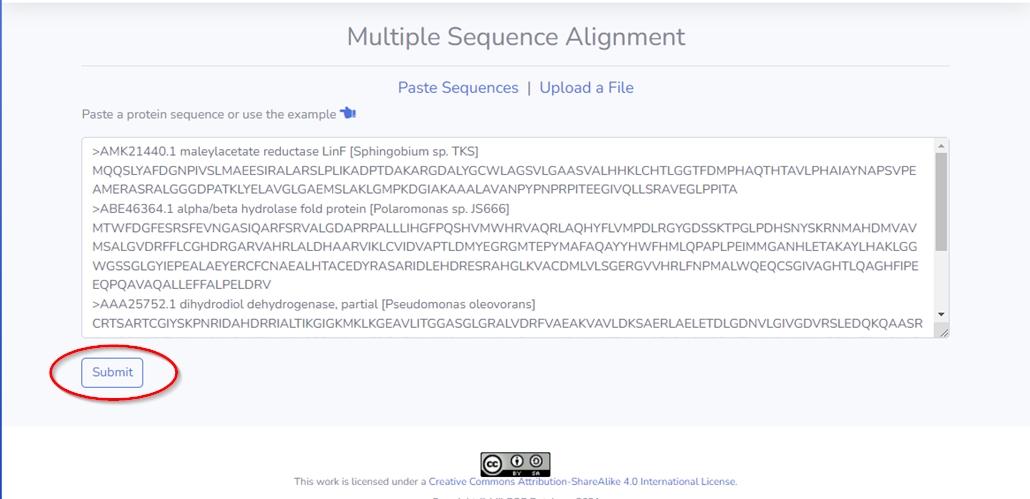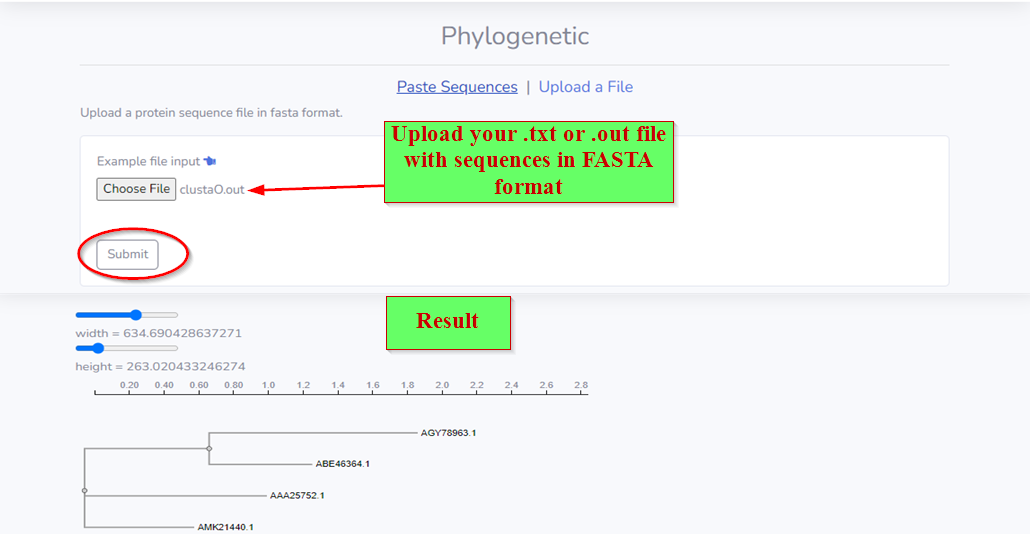HELP
Start
The mibPOPdb search user interface is divided into three main sections so users can choose the section that better fits their needs. In summary, the first section, "Browse," holds the full content of the databases' current version. The "Search sequence" section provides a suite of integrated bioinformatics tools facilitating researchers to perform analytical and annotation functions. The "Prediction Tools" provides a web-based application for determining and predicting biodegradability and toxicity of chemicals.
Submit help page details (usage)
The mibPOPdb offers a submission page that enables other researchers to submit their data about novel POP-degrading microbial communities. The submitted record will be evaluated, and upon acceptance, your data will be uploaded into the database. Your data will be scheduled for public release when the updated version of the database is released.

Browse
Users can quickly view and peruse the lists of all compounds, POP-degrading organisms, POP biodegradation genes in the mibPOPdb through the Browse module on the toolbar. Detailed page information Users can access the report card page (for a particular compound, strain, gene of interest) to view detailed information for a particular entry
Query
The query bar is available in the upper left corner of each webpage. Free text searching is supported, allowing users to input any term associated with POP degradations.
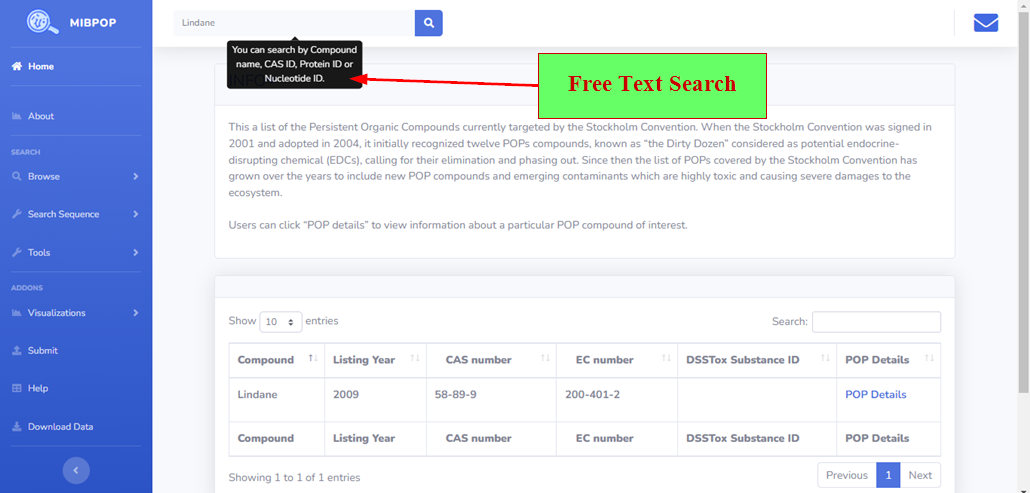
Free text filter tabs
In the (compound, organisms, and biodegradation genes) datasheets, users can focus on specific information and perform efficient data analysis by making use of the interactive free-text filters based on their specified criteria (e.g., country, year, compound, organism)
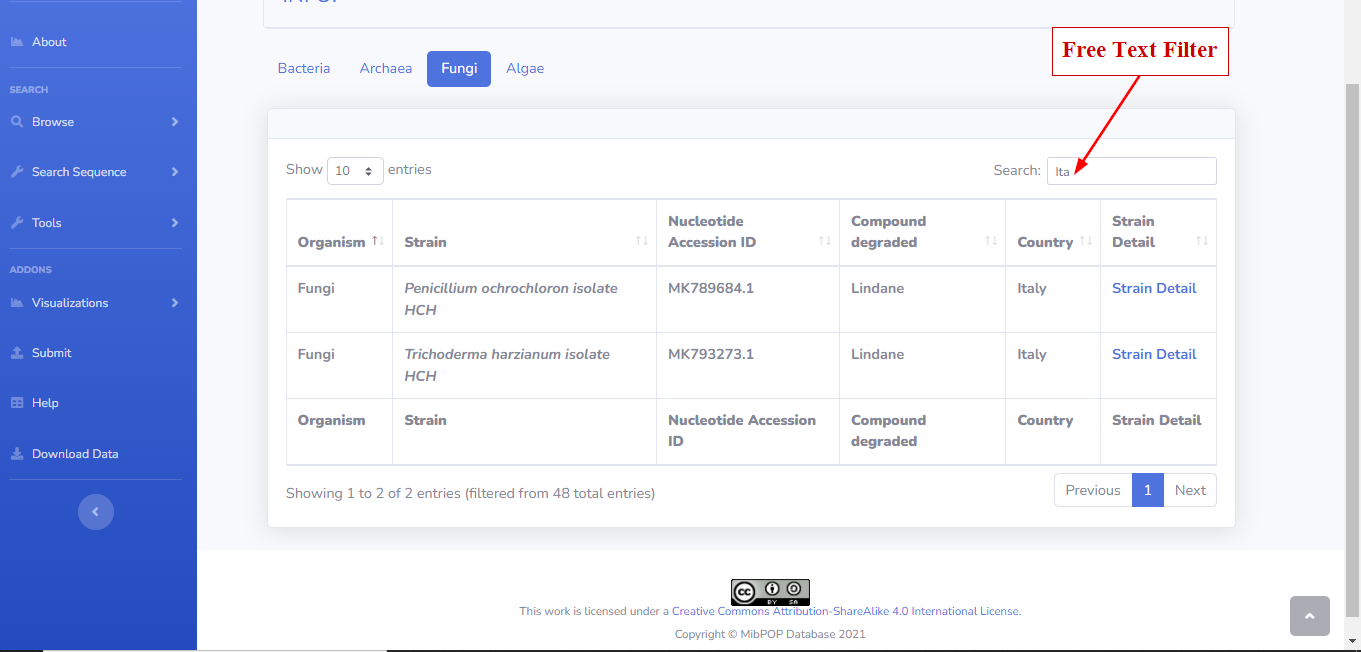
Quick Browse
You can use the (POP compound) dropdown menu on the Home page to select compound and click on organism you want to query and the relevant POP biodegradation datasets for that chemical will be returned/displayed.
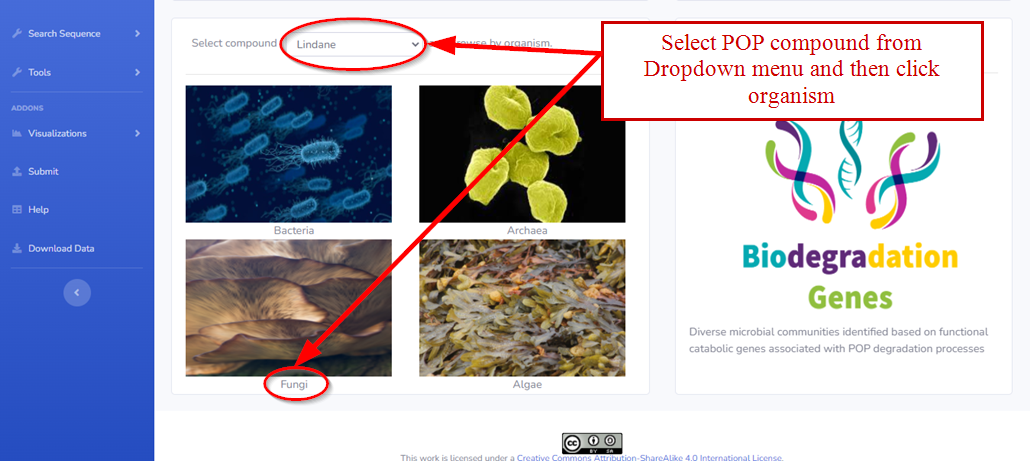
Predicting Chemical Biodegradability.
You can input SMILES string of your query chemical compound and then execute the program to determine the probability of biodegradability.
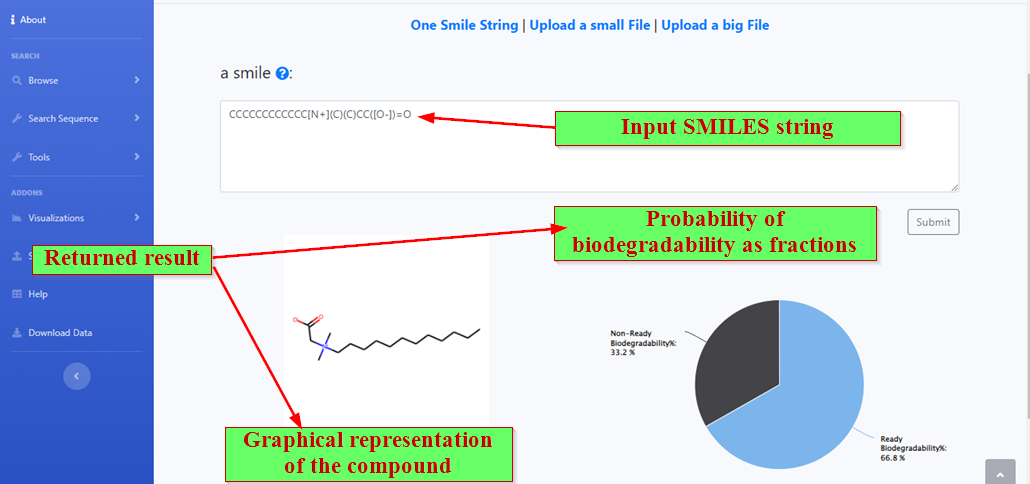
Visualization
Some data visualizations are provided to make it easier to identify patterns, trends, and outliers in large data sets and generally for users to have an appreciative feel of the data content in the database.
The Maps for Distribution of POP studies that have been collected
Information from maps can help researchers show countries where biodegradation data sets have been omitted or studies are yet to be conducted. It will help foster information sharing amongst researchers, and we anticipate researchers will submit their datasets to add to the literature on the microbial degradation of POPs.
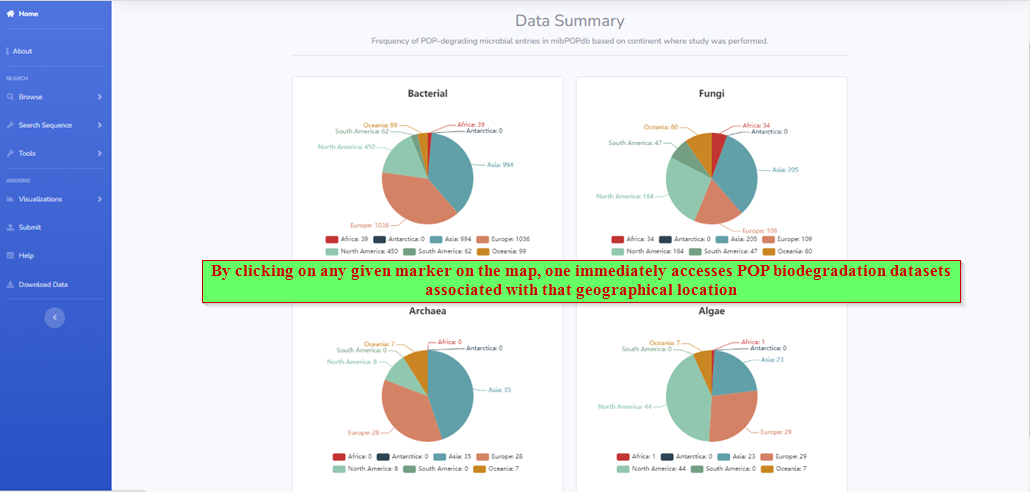
The Stockholm Convention on Persistent Organic Pollutant Timeline Timeline showing the listing of compounds under the Stockholm Convention
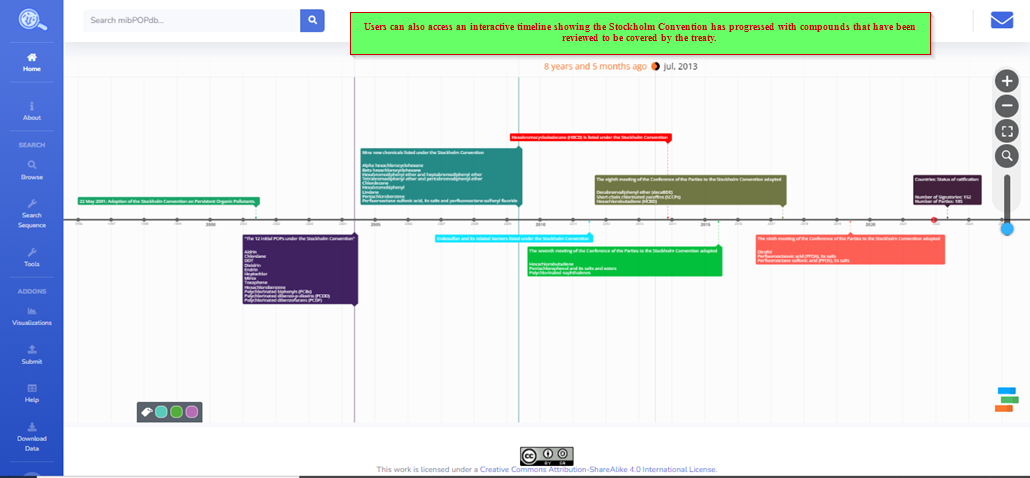
Examples
The mibPOPdb database has a couple of bioinformatics utilities for sequence analysis in the search sequence module, comprising BLAST, HMMER, Clustal O, and Phylotree modules. Users can conduct sequence searches/analysis and query their sequence/s against sequences in the local database.
Predicting Biodegradability of Chemicals
Users can use this web-based application to predict the biodegradability of chemical entities and generate the structure of the chemical compound by just submitting their query chemical as a SMILES string. The picture of the compound can be saved as a png file.


